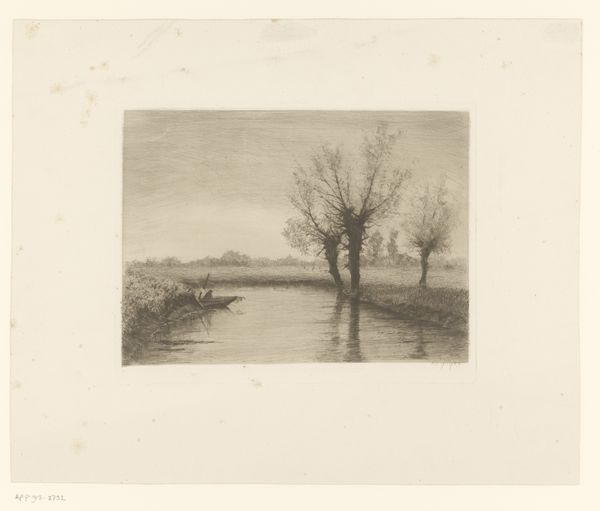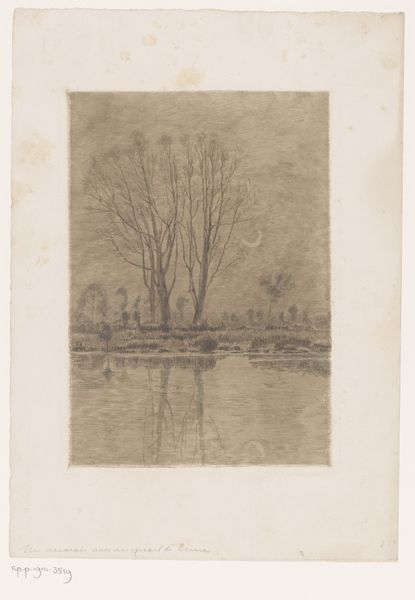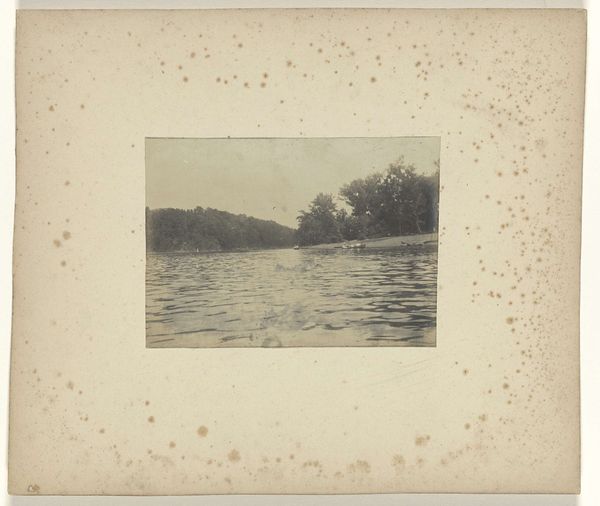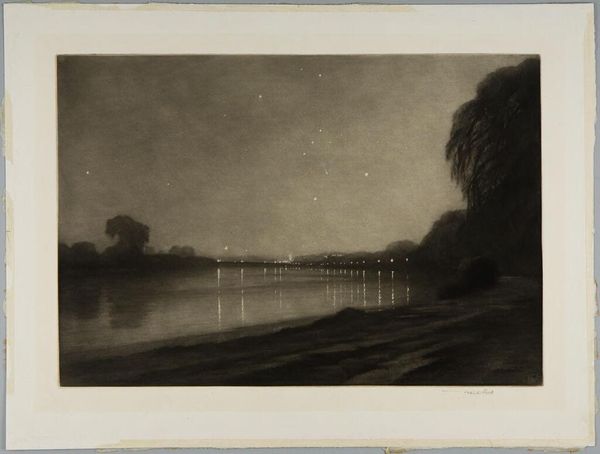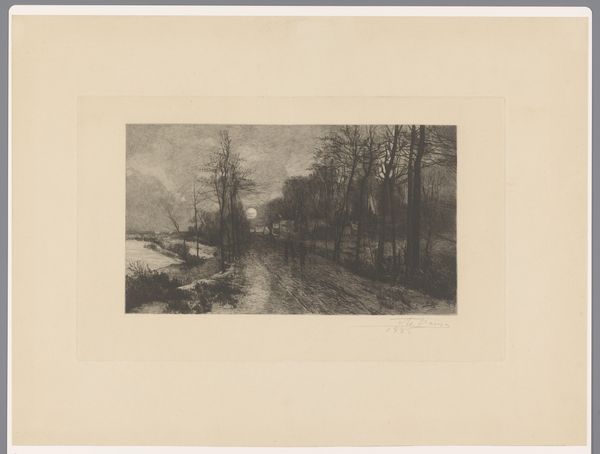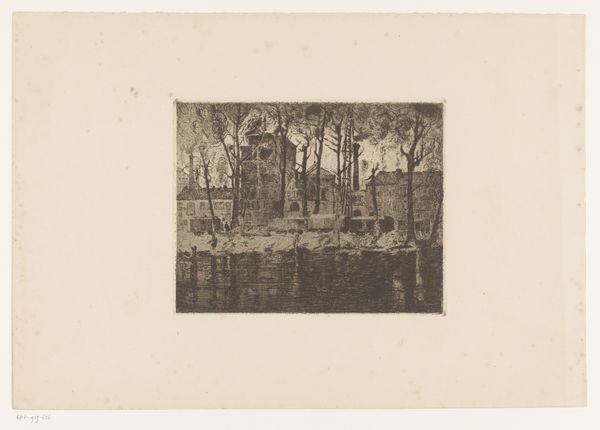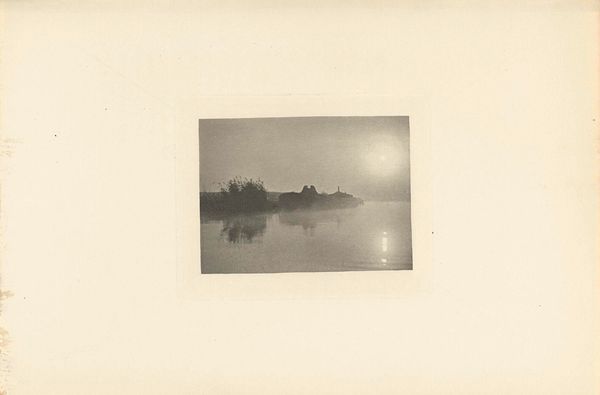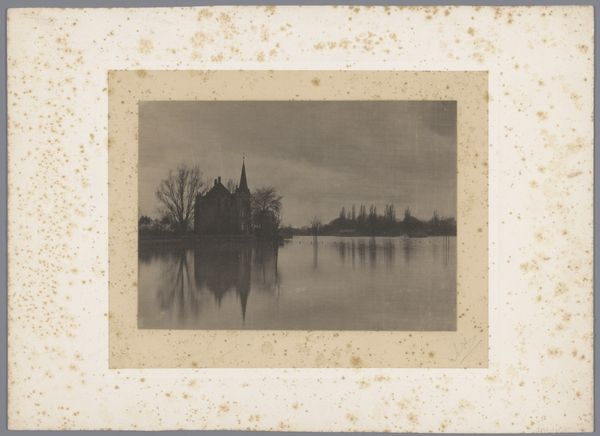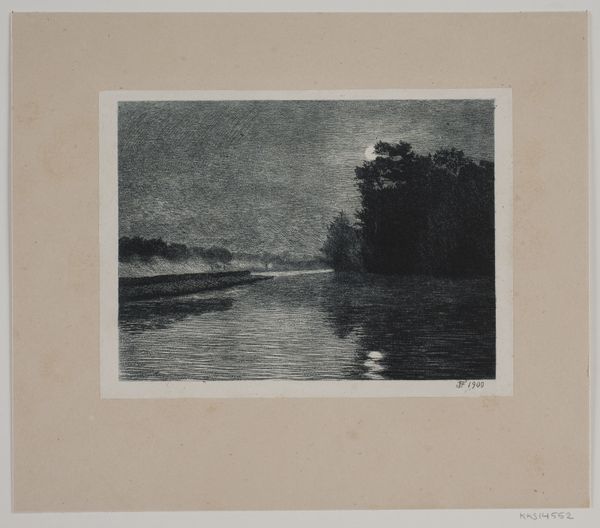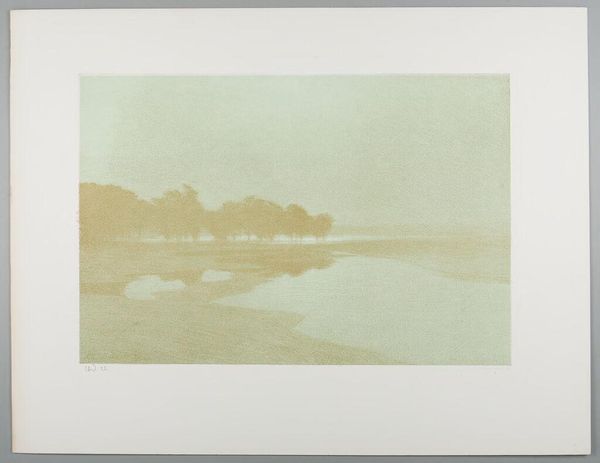
Dimensions: height 81 mm, width 125 mm, height 177 mm, width 266 mm
Copyright: Rijks Museum: Open Domain
This is a landscape by Peter Henry Emerson, made using a photographic process called platinotype. The platinotype – also known as the platinum print – was a refined alternative to the more common silver print. It used platinum salts rather than silver, resulting in a monochrome image of exquisite tonal range, with a matte surface. But here's the thing: it was also more labor-intensive and expensive, requiring careful preparation of the paper, precise exposure, and meticulous development. With its velvety blacks and delicate highlights, the platinotype process suited Emerson's artistic vision of capturing the subtleties of nature, with the aim of portraying the English countryside and its inhabitants in an authentic, unvarnished way. In this image, the choice of material speaks to the values of the Arts and Crafts movement, with its emphasis on craftsmanship and truth to materials. By embracing the platinotype, Emerson aligned himself with a broader cultural impulse to elevate the status of photography as an art form. In doing so, he reminds us that the act of making is inseparable from the meaning of the final image.
Comments
No comments
Be the first to comment and join the conversation on the ultimate creative platform.
